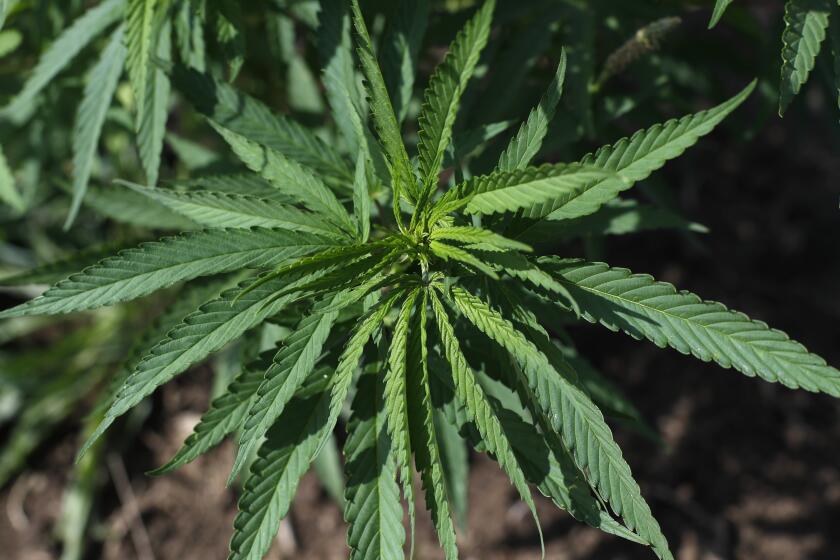The future of weed isn’t in California. It’s somewhere totally unexpected

What does the future of cannabis look like in California and across the nation? A possible answer lies in an unlikely place. Oklahoma is a politically conservative, medical-marijuana-only state in the South that’s a beacon of hope, a cautionary tale and a strategic long game all at once.
When Sooner State voters legalized medical marijuana at the ballot box in June 2018, business exploded thanks to combination of factors that included low infrastructure costs; a low cost of entry to the market (business licenses cost just $2,500); no cap on the number of dispensaries (there are currently 2,301 in the state compared to 913 in California, which has 10 times the population); and the relative ease with which state residents can obtain a medical card (around 10% of Oklahoma residents now have one).
For the record:
10:58 a.m. April 20, 2022An earlier version of this story incorrectly stated the number of licensed dispensaries in each state. Oklahoma has 2,301 dispensaries and California has 913.
Opening a cannabis dispensary with a social equity license in Los Angeles takes endurance. Here are resilient owners who fought hard to run pot shops.
In addition, the only hurdle for out-of-state businesses looking to set up shop is the requirement the business be 75% owned by an Oklahoma resident.
Because Oklahoma and California are three time zones apart and cannabis can‘t cross state lines (due to weed’s status as an illegal drug under federal law), you might not think what’s happening in the Panhandle State would have much at all to do with what’s happening in the Golden State.
That’s what I thought until last August, when Chris Ball, founder and chief executive of L.A.-based Ball Family Farms, told me in an interview that he’d purchased 75 acres in Oklahoma, secured a license there and was planning ahead — way ahead — for a time when weed was federally legal and the state’s central location would make it the perfect hub for low-cost, coast-to-coast cannabis commerce.
In the months since, I discovered more and more California brands had established a presence in the state. One of them is L.A.-based Tradecraft Farms, which was an early entry into the Oklahoma market, setting up a seed-to-sale operation beginning in 2019 and now has cultivation facilities and five dispensaries.
Ball Family Farms’ founder thinks L.A.’s social equity program could take a page from the sports scholarship playbook.
Another is Venice-based Stone Road Farms, which has inked a licensing deal with Tulsa-based Stash House Distribution. The latter is responsible for the cultivation end and puts the results in Stone Road packaging. (Stash House currently has a similar set-up with a four other California brands.)
Eventually, it became clear that I needed to put (cowboy) boots on the ground to explore the California-Oklahoma connection in more depth.
Last month, I joined “The Green Room” video crew (producer Erik Himmelsbach-Weinstein and videographers Mark Potts and Cody Long) for a four-day, three-city tour that took us from frozen fields and lush green grow rooms to the hallowed halls of the Oklahoma State Capitol. Along the way we talked to bureaucrats, law enforcement, cannabis consultants, recreational-use advocates and businesspeople trying to make a buck in what’s been dubbed the Wild, Wild West of weed.
Along the way, we learned a lot about the cannabis business climate there — and what it could portend for the legal weed industry here.
The video above is the first episode of Season 2 of our series. Welcome (back) to “The Green Room”!
Where does 420 come from? The Waldos, a group of friends who met at San Rafael High School, say they started the 420 movement back in 1971.
More to Read
Updates
11:29 a.m. April 20, 2022: An earlier version of this story stated that cannabis seeds can not cross state lines. A January 2022 letter of clarification from the Drug Enforcement Administration indicates that may no longer be the case, so the reference has been changed to cannabis crossing state lines and not cannabis seeds.
Sign up for The Wild
We’ll help you find the best places to hike, bike and run, as well as the perfect silent spots for meditation and yoga.
You may occasionally receive promotional content from the Los Angeles Times.














